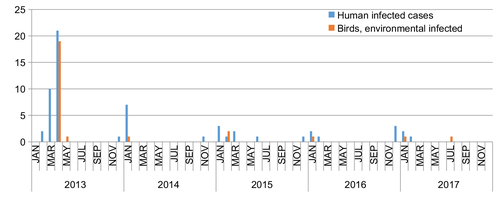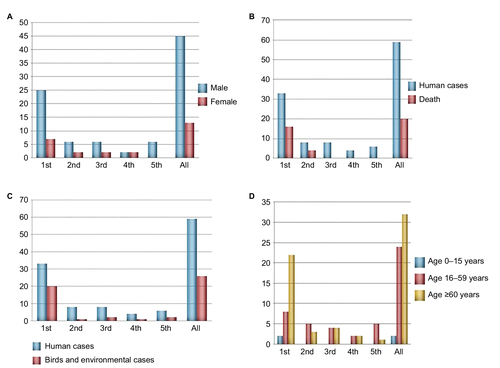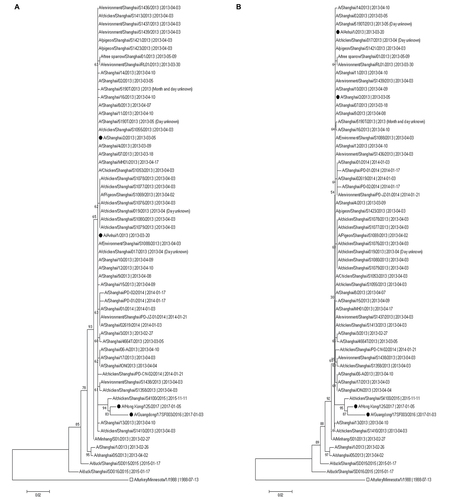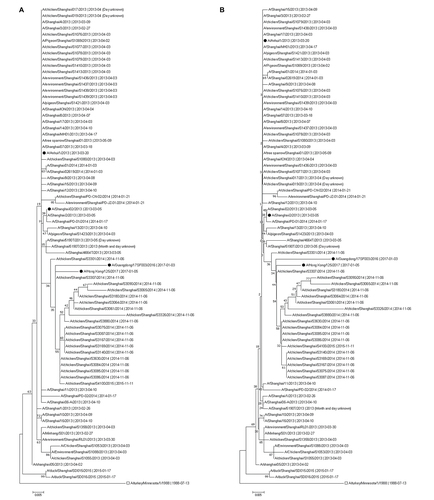Figures & data
Figure 1 Confirmed cases of avian influenza A(H7N9) virus infections in humans, birds, and the environment in Shanghai reported to the WHO and Food and Agriculture Organization (n=85), by month of illness onset, 2013–2017.

Table 1 Confirmed human cases of avian influenza A(H7N9) virus in Shanghai as of 31 December 2017
Figure 2 Age, gender, and death distributions of confirmed cases of avian influenza A(H7N9) virus infection during the five epidemics in Shanghai, 2013–2017.

Table 2 Amino acid homology (%) of the eight genes of avian influenza A(H7N9) virus strains in Shanghai, China, 2013–2017
Table 3 Amino acid homology (%) of the surface HA and NA proteins between the avian influenza A(H7N9) Shanghai strains and WHO-recommended vaccine candidates
Figure 3 Phylogenetic trees deduced using (A) the maximum-likelihood method and (B) the neighbor-joining method of HA, displaying the genetic divergences of the H7N9 viruses, Shanghai, 2013–2017.
Abbreviation: HA, hemagglutinin.

Figure 4 Phylogenetic trees deduced using (A) the maximum-likelihood method and (B) the neighbor-joining method of NA, displaying the genetic divergences of the H7N9 viruses, Shanghai, 2013–2017.
Abbreviation: NA, neuraminidase.

Table 4 Characterization of key molecular markers of avian influenza A(H7N9) viruses in Shanghai, 2013–2017
Table 5 Signature amino acid mutations of avian influenza A(H7N9) viruses in Shanghai with WHO-recommended vaccine candidates, 2013–2017
